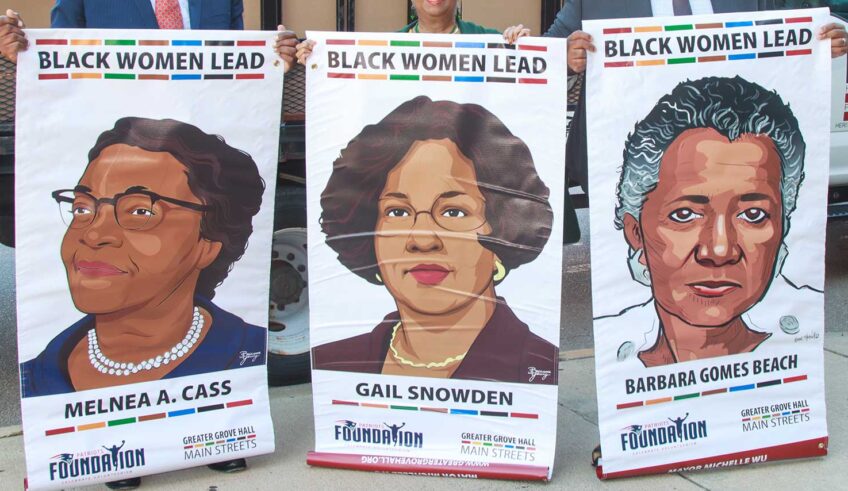In two separate reports issued over the past month, a strange thing happened in the fight over America’s economic future: The nation’s big-city mayors and Wall Street got on the same page about the need for broad-based economic fairness. This policy record-scratch came in the form of different documents issued by the U.S. Conference of Mayors and Standard & Poor’s, the ratings agency after whom one of the world’s major stock market indices is named. Far and apart on other issues, these distinct bodies somehow managed to agree within days of each other that income inequality is holding the economy back and that the time has come for something to be done about it.
Given the dramatic and disproportionate impact that income inequality continues to have on communities of color, the alarms raised by the U.S. Conference of Mayors and Standard &Poor’s are a potential turning point in the debate over the drastic steps required to reverse income inequality. Since the growing gap is a direct result of policy choices that the United States has made since the 1980s, it can be turned around. But there’s not a second to waste because, as the Standard & Poor’s reports states plainly, the forces behind income inequality go a long way to explain why the current recovery hasn’t taken off.
The core problem, as the U.S. Conference of Mayors lays out, is not only the long period of economic stagnation for nine out of 10 Americans but the fact that, even in years of economic growth, only a handful benefit. As Nobel Prize-winning economist Joseph Stiglitz has stated repeatedly since 2000, nine out of 10 dollars from the nation’s economic growth have gone to the top one percent. What this means is that even though the economy has recently been growing at two percent annually — already a low number — less than 10 percent of that is left for the remaining 99 percent of the people. The bottom line is that the wealthy are capturing the lion’s share of income.
What this actually translates into for all but a few is lower income and less money to take home. As the Mayors’ Conference’s report highlights, jobs created this year pay on average $20,000 less than those lost before the downturn — $47,000 now versus $60,000 before. But there’s a reason for this: Most of the new post-recession jobs that have been created are low-wage or part-time.
Lower incomes are only part of the problem. As high-income earners continue to surge ahead, the explosion in low-wage jobs actually widens the gap between those at the very top and everyone else. In fact, the current gap in wages is now twice as large as in a similar period after the last recession in 2002.
The trend of lower wages and a widening income gap is bad for the economy as a whole, but it has unleashed a full-scale crisis for people of color. Why’s that? Well, first-of-all a huge chunk of middle-income jobs lost during the recession were in construction and in the public sector. A disproportionate number of construction jobs were held by black and Latino men. Jobs such as teaching, firefighting and other key government functions formed the backbone of the black middle class. Those jobs have been whittled away.
Moreover, people of color — specifically women of color — are more likely to hold most of the jobs at the bottom of the income scale such as home health care workers and restaurant workers. That means that the growth of the lowest wage part of the workforce is actually a surge in the number of lower-wage people of color in those jobs. Add to this difficult mix of wrong things colliding together the disastrous collapse of post-recession black and Latino wealth to the lowest levels ever recorded and it’s clear that the situation in communities of color is dire.
What’s refreshing is that this dysfunction at the heart of our current economic system is increasingly recognized not as a problem that we can ignore but as a threat to the very promise of America itself. As New York City Mayor Bill de Blasio, chair of the Mayors’ Conference’s task force on economic opportunity, said in response to their report, “The inequality crisis facing our cities is a threat to our fundamental American values.” What’s odd is that now a titan of Wall Street agrees with him.
Echoing the argument of those concerned about economic justice, Standard & Poor’s argues that the nation has approached a “threshold” where “income inequality can harm sustained economic growth.” While Standard & Poor’s touches briefly upon well-worn conservative arguments about the reasons for inequality — educational differences, global trade and the impact of technology — surprisingly the heart of their argument is devoted to showing what progressives have argued all along. Namely that the government’s policy to lower taxes on income from investments and effectively raise them on income from work starting in the 1980s set us on the path of where we are today.
The good news is that the increasing consensus on the causes of income inequality may now lead the possibility of movement on solutions. Given the political power of Wall Street, their increasing acknowledgement of where things went awry might create the opportunity to begin to change them. The proposals to do so are wide and varied. On the list of the mayors’ priorities are things that make solid economic sense. They include a higher minimum wage, pre-K educational opportunities, protections for part-time workers, a push for affordable housing and access to capital for local entrepreneurs.
Whatever we chose to do about income inequality the need is for speed. That’s because as, Standard & Poor’s concludes in their report, a “rising tide lifts all boats…but a lifeboat carrying a few, surrounded by many treading water, risks capsizing.”
Imara Jones is the Economic Justice contributor for Colorlines.com. This piece originally appeared in Colorlines and has been reprinted with permission.






